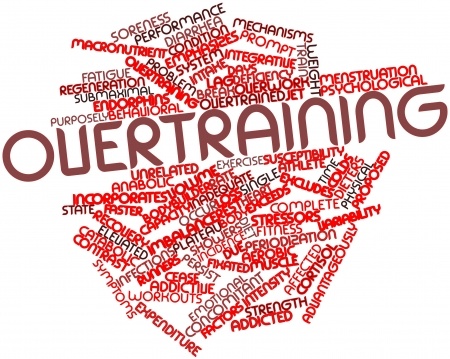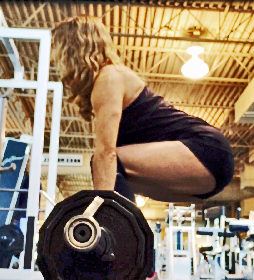Why Recover?
Guest Post by Suzanne
from Workout Nirvana
I’m happy to be back on Lisa’s blog – we go way back! She’s rocked my online personal training program and even demonstrated her squat for me on the streets of downtown Portland. I was excited when she asked me to guest post on the subject of recovery, a subject I feel passionate about.
I spent years training my heart out without thinking much about recovery. Even though I had nagging injuries and frustratingly slow progress, I just couldn’t force myself to back off my frequent weightlifting sessions – I just loved them too much.
It wasn’t until I became a fitness trainer that I realized that we train hard to recover, not the other way around. Since then, I’ve had fewer injuries and better progress. While recovery is a complex subject and varies greatly from person to person, it’s important to understand how it fits into your training routine.
Why Recover
With any type of training, your central nervous system, muscles, connective tissue, and joints are stressed by exercising. The only way to get stronger, bigger, faster, and better is to let your body recover and adapt while glycogen stores are replenished and muscle tissue is repaired (among many other processes).
Unfortunately, without adequate recovery and rest, two bad things are likely to happen: (1) repetitive stress injuries and/or (2) stalled progress.
Repetitive Stress Injuries
If you push your body repetitively without letting it recover sufficiently, your body can become weakened and overstressed. If you’ve ever had tennis elbow, plantar fasciitis, IT band syndrome, or patellar tendinitis, you understand this all too well.
Stalled Progress or Performance
When you work out while your neuromuscular system is still in a stressed state, your body simply can’t perform at its best. Your body improves by continually adapting, so if you overtrain there’s no time for your body to build muscle or achieve a higher level of conditioning or strength.
How Long Should You Recover?
Recovery days should be scheduled into your week just like your workouts. You need to look at ALL your activities as one big picture instead of conveniently forgetting to include that one class or activity.
Resting Between Workouts
How long you rest between workouts depends on many factors – your age, the intensity of your workout, whether you’re training for an event, your other activities, and more. Generally, the less intense your workout, the less time you need to recover. But since this is subjective, having a set schedule is the safest bet.
By the way, if you’re terribly sore you may need to add a day in between your workouts (heat and massage can relieve soreness but won’t speed recovery).
Handling Multiple Activities
If you’re thinking of increasing your activity level – adding a class, starting personal training sessions, training for an event – there’s one rule you should remember:
When you add something, you have to take something away.
You simply can’t keep adding activities without eventually burning out physically. If you’re not already exercising, then add activities slowly and work up to higher intensities.
It’s smart to schedule intense running or cycling sessions and lower-body strength training sessions on different days, otherwise your performance will definitely suffer in one or both areas. In fact, it can take well over 24 hours to from recover from an intense running session, so you might want to think twice about heavy squats the very next day.
If you lift weights three or four times a week on top of other resistance-based activities else (CrossFit, boot camps, etc.), you might be burning the candle at both ends. All of these activities tax your neuromuscular system, and you need at least 48 to 72 hours between strength workouts. (I talk more about strength-training recovery here.)
Resting Within a Training Cycle
Cycling low- and high-intensity period of training (called periodization) is a must to allow your body to adapt and recover fully and then come back strong in peak condition. All it takes is a little planning. There’s lots of ways to alternate high/low intensity:
-
3 weeks high / 3 weeks light to moderate (repeat)
-
1 week high / 1 week light to moderate (repeat)
-
1 session high / 1 session light to moderate (repeat)
You get the picture – you want to vary the intensity of your training so that your body isn’t under constant assault. Not only that but you’ll perform better in the long run.
On your rest days, use active rest to facilitate recovery and promote cardiorespiratory health, such as walking, cycling, rowing, or swimming.
Putting It All Together
Along with allowing time between your workouts and cycling the intensity, don’t underestimate the importance of these factors in recovery:
-
Sleep
-
Proper nutrition
-
Proper form
-
Cross training
Questions? Don’t hesitate to ask. I love helping people get bigger, stronger, and more powerful!
Suzanne Digre is a NASM-certified personal trainer who leads online training groups now open for registration: Fierce Definition (12 Weeks to Muscle Definition that Makes People Look Twice) and Lean & Strong. With over 15 years of lifting experience, Suzanne writes at workoutnirvana.com, where she shares her passion for and expertise in strength training and clean eating.
Suzanne loves to connect on social media. Find her on: Twitter, Facebook, Google+, YouTube.



Biz
Great guest post! Yep, I’ve discovered that the older I get, the more rest between workouts is key.
Thanks! 😀
Lisa Eirene
I’m noticing that ask well–and that injury is easier!
Coco
Great explanation. I am not very good at recovery, but I am trying!
Randy
I’ve found the proper nutrition to be my biggest obstacle. I think that’s because other people are involved in meal planning, dining out, social gatherings, etc and I’m not totally in control of that aspect. Plus it costs more to eat properly! And it takes longer in a lot of cases. That doesn’t seem fair, but that’s the way it is.
Joanne Smith
Biz, I agree with your comment. From the age of 30 and onwards, a number of physical changes take place in the average person’s body. Aerobic capacity decreases, muscle mass reduces, muscle elasticity reduces, lung elasticity declines, bone density reduces, the metabolism slows, body fat increases and the immune system becomes weaker. These changes can have an adverse impact on any sort of physical activity but it is still possible to compete at good levels with a good training regime and recovery program. You only need a good plan that you can stick to
Stacey Crews
I do a bit of body building with my boyfriend and it is important to rest properly between training sessions. When your muscles repair themselves after training they are slightly stronger than before, which can lead to further growth if training is continued after sufficient rest. It is important to note if you train before the muscle is fully recovered, you can retard growth, and if you fail to train at all you will lose size. Just my 2 cents!!
Lisa Eirene
Interesting! That makes a lot of sense, though.